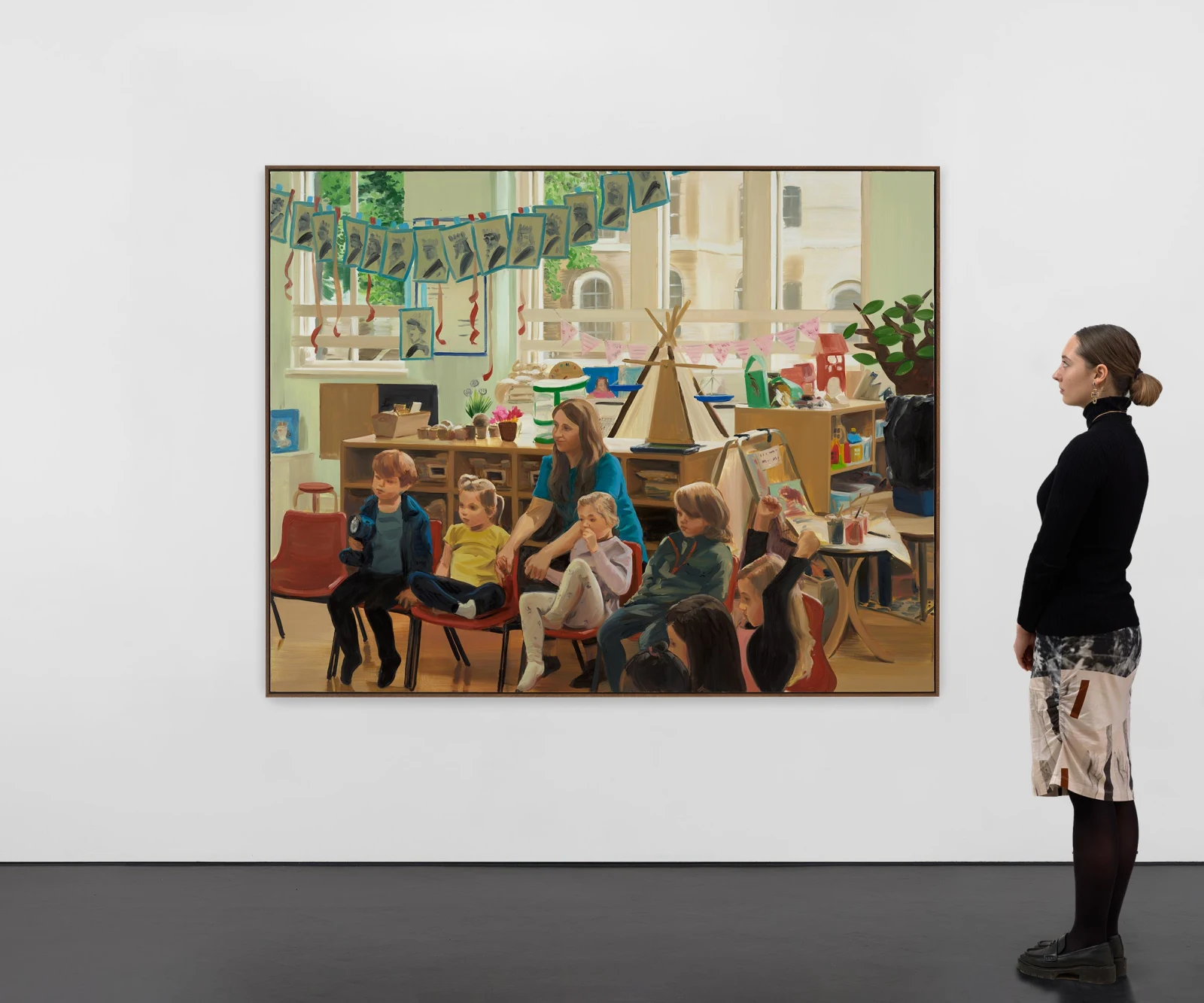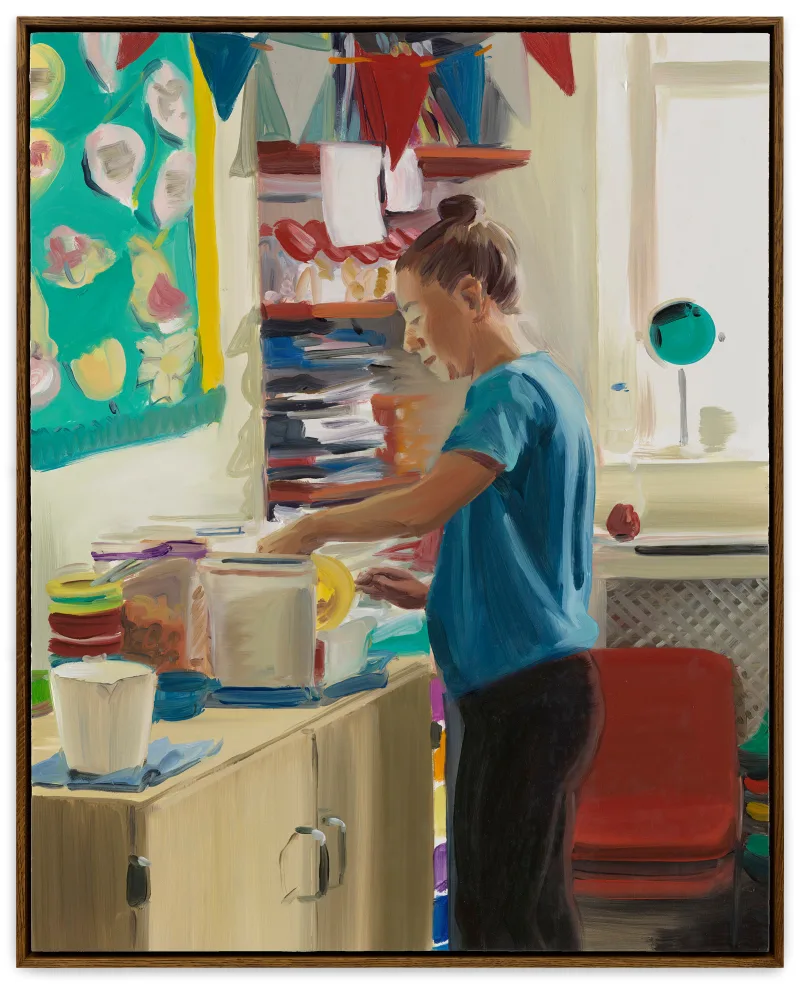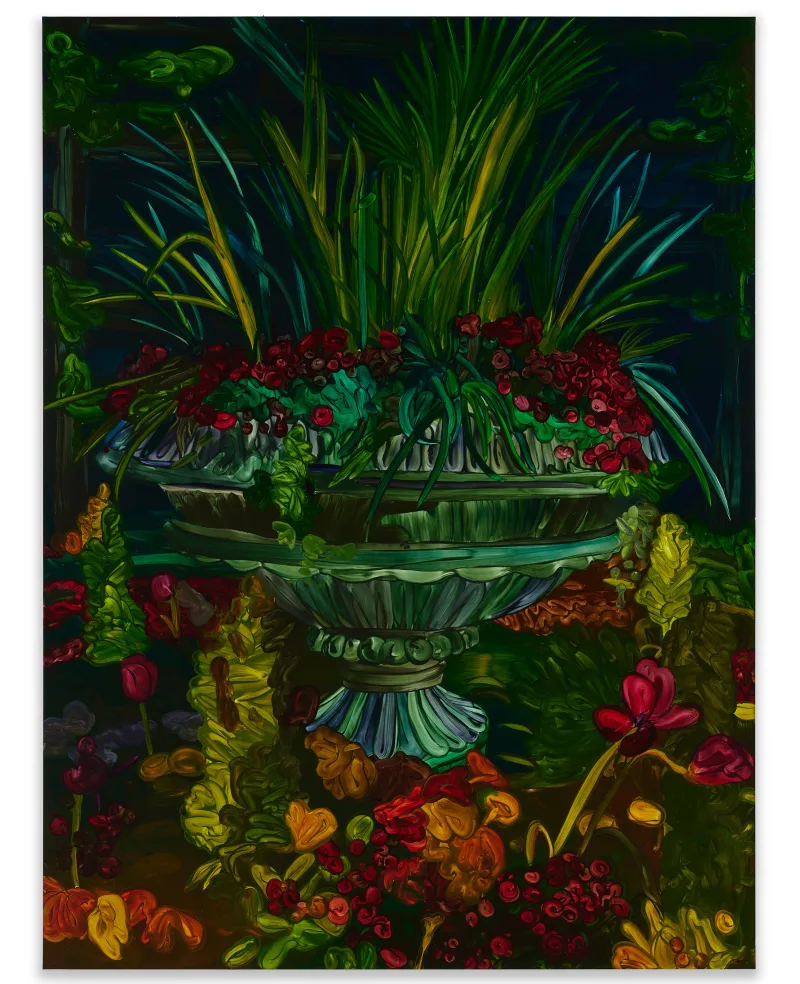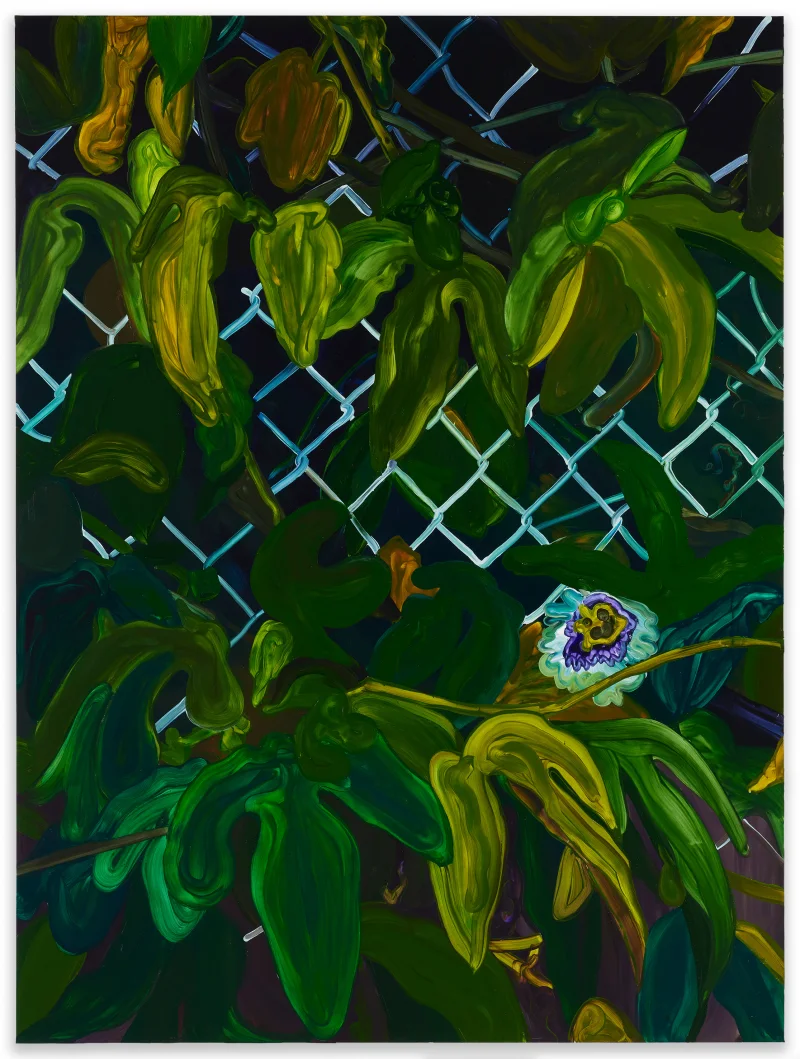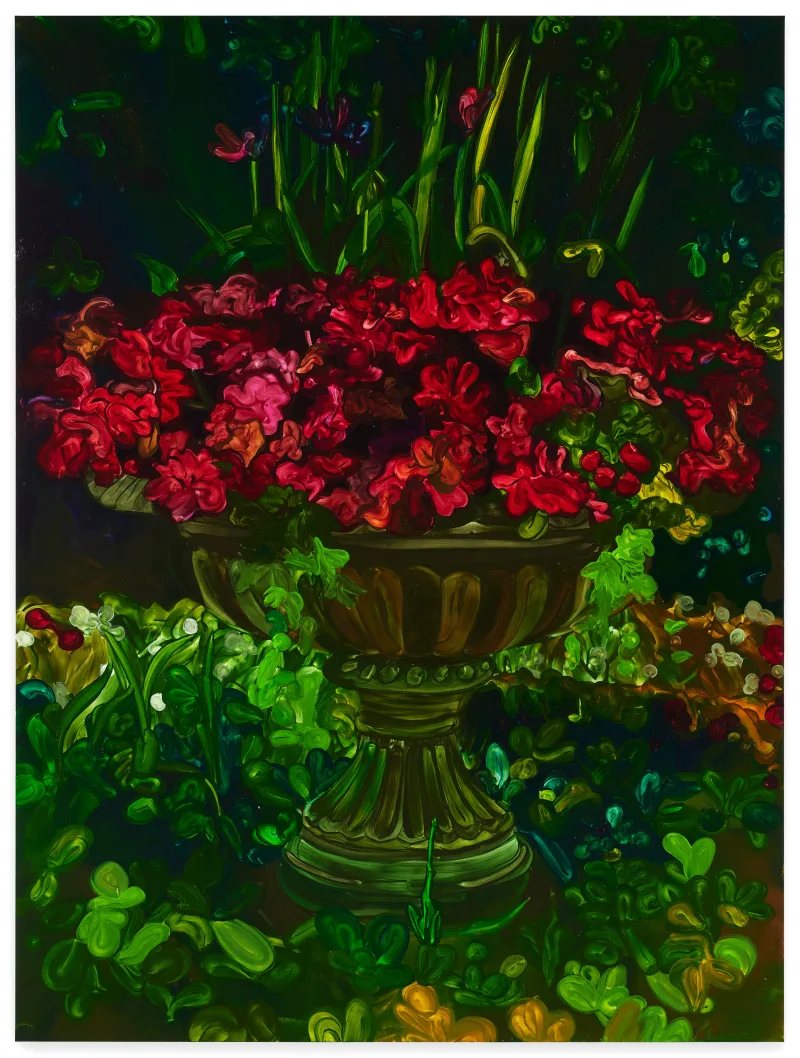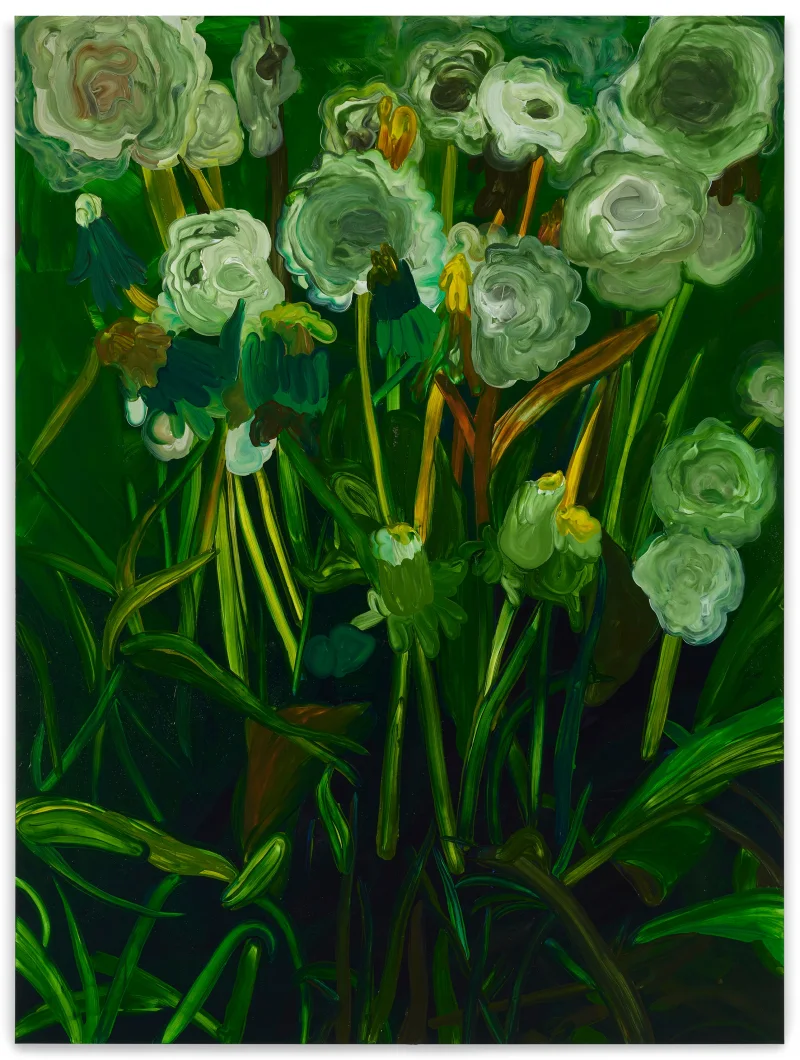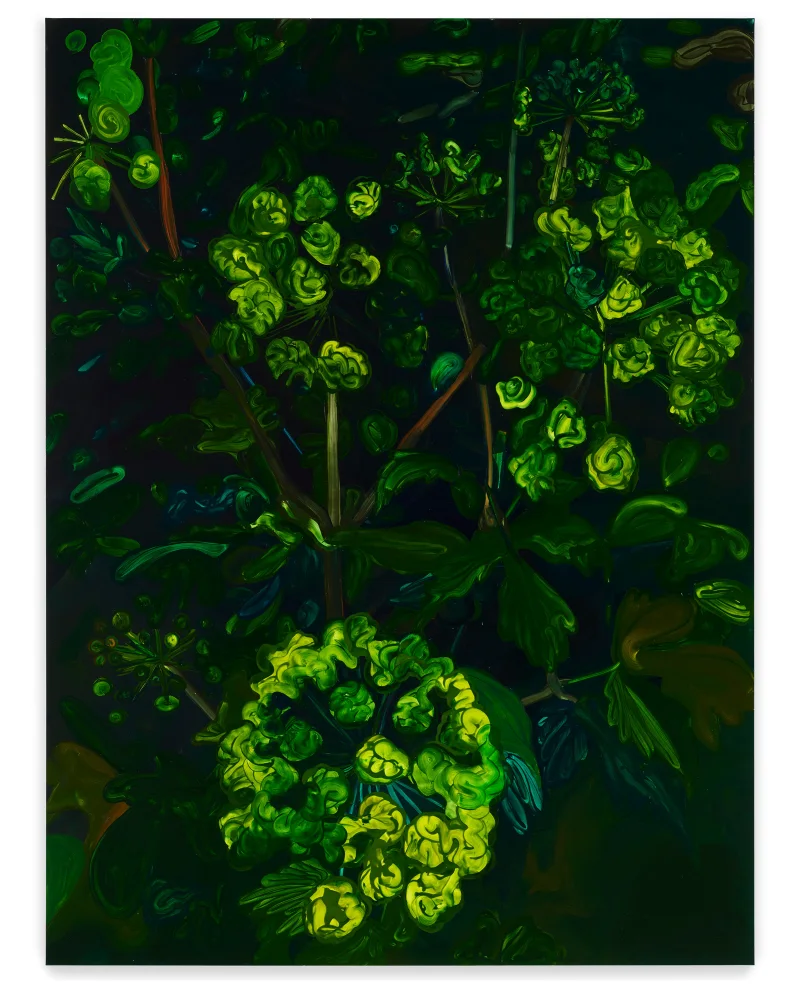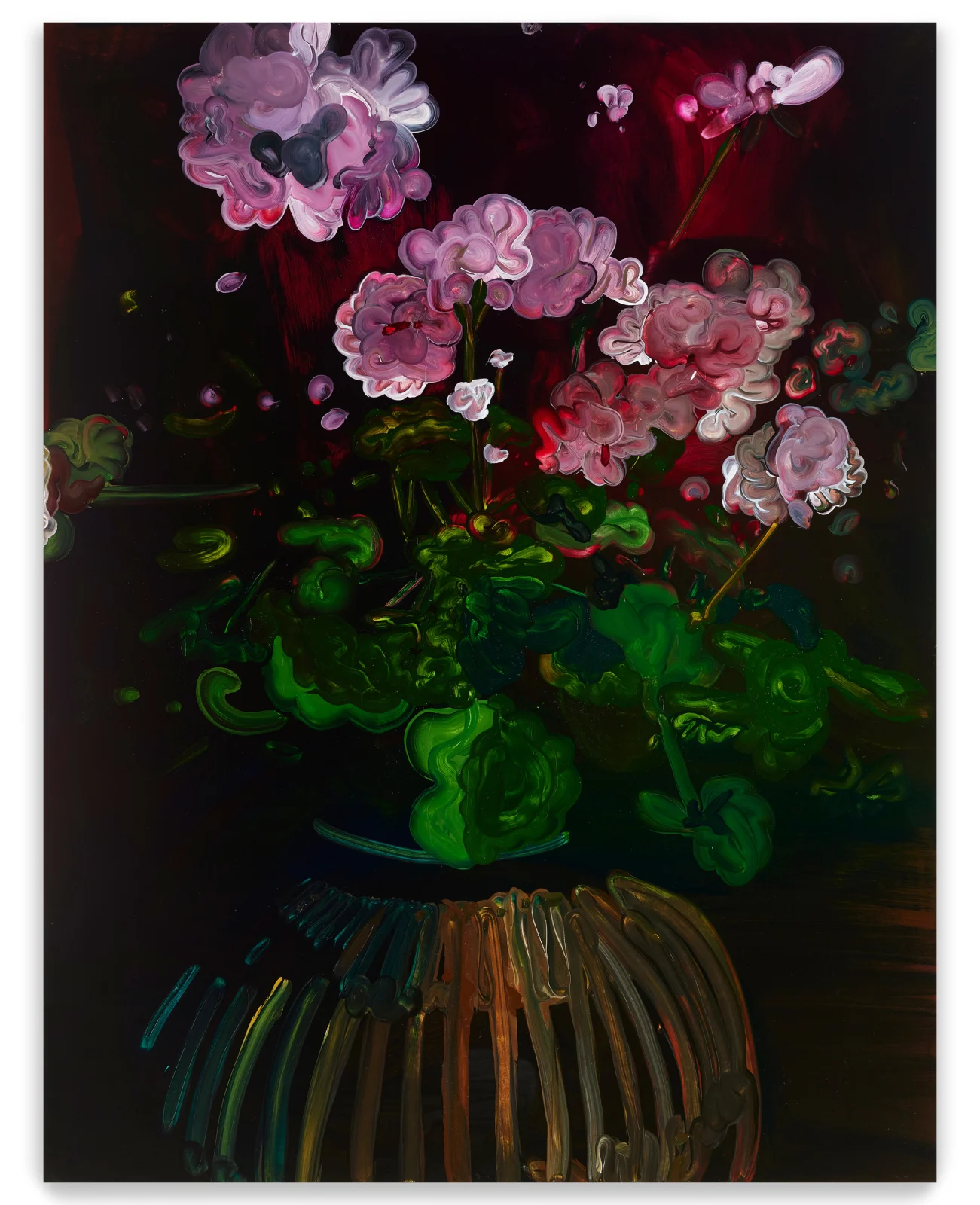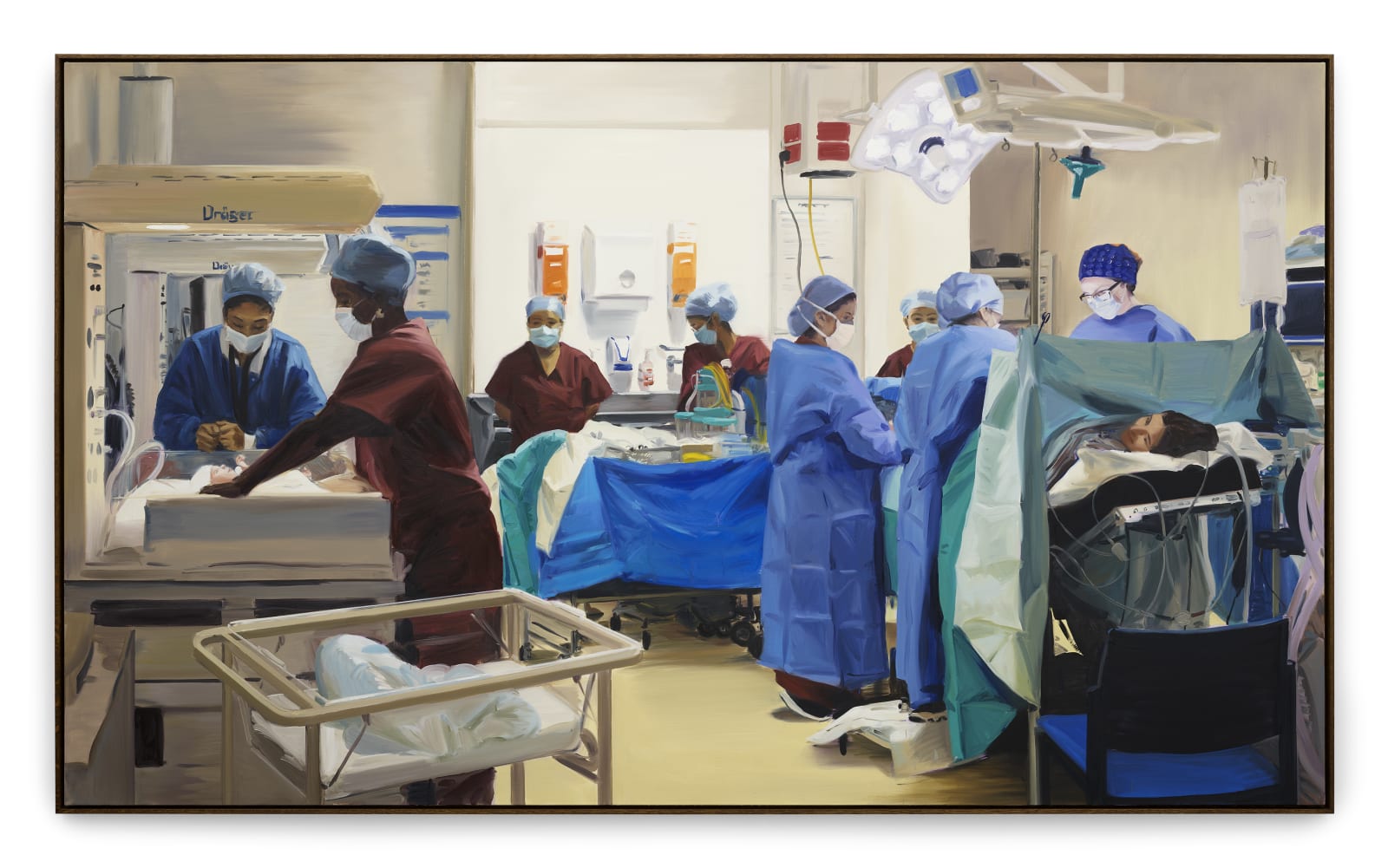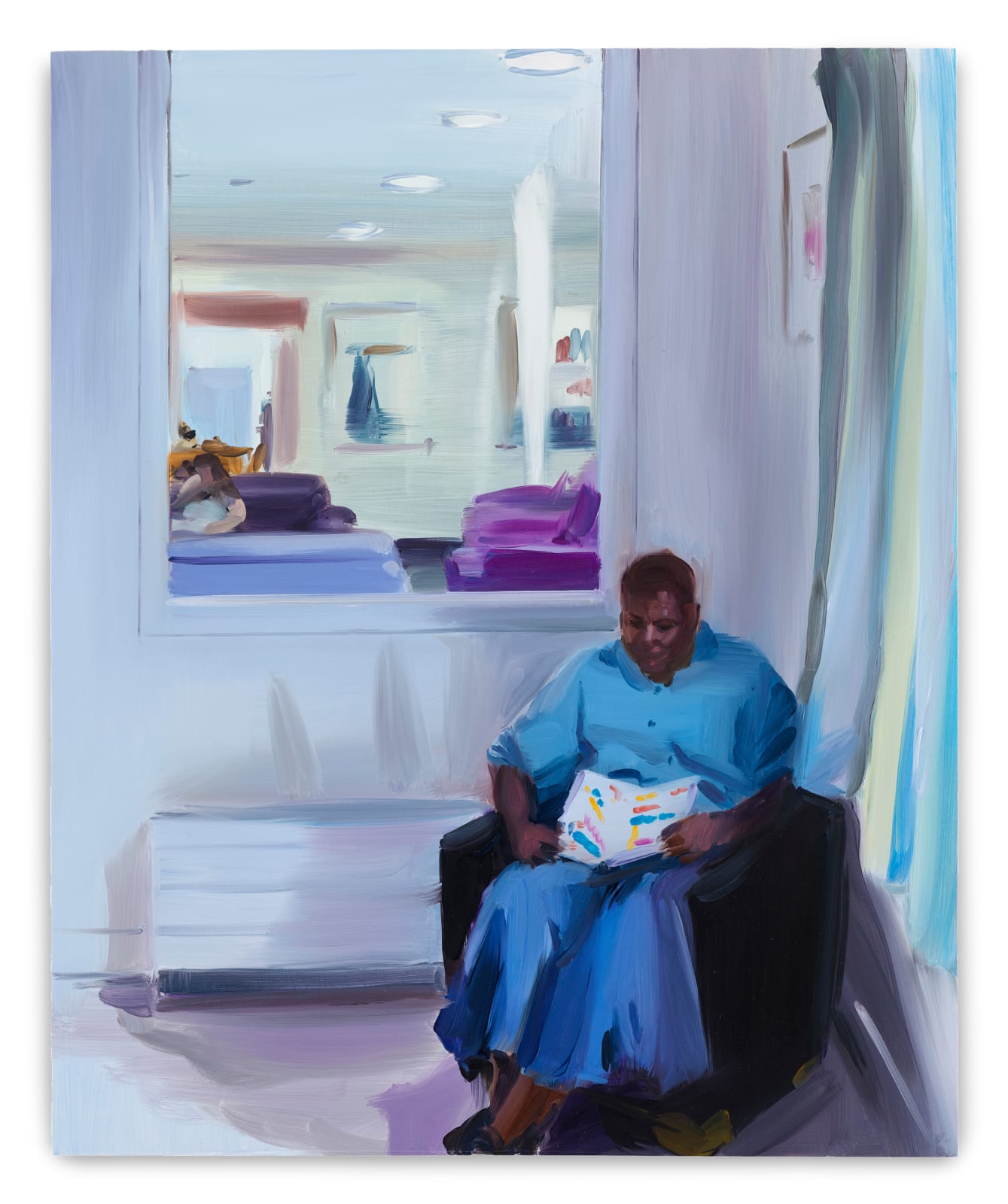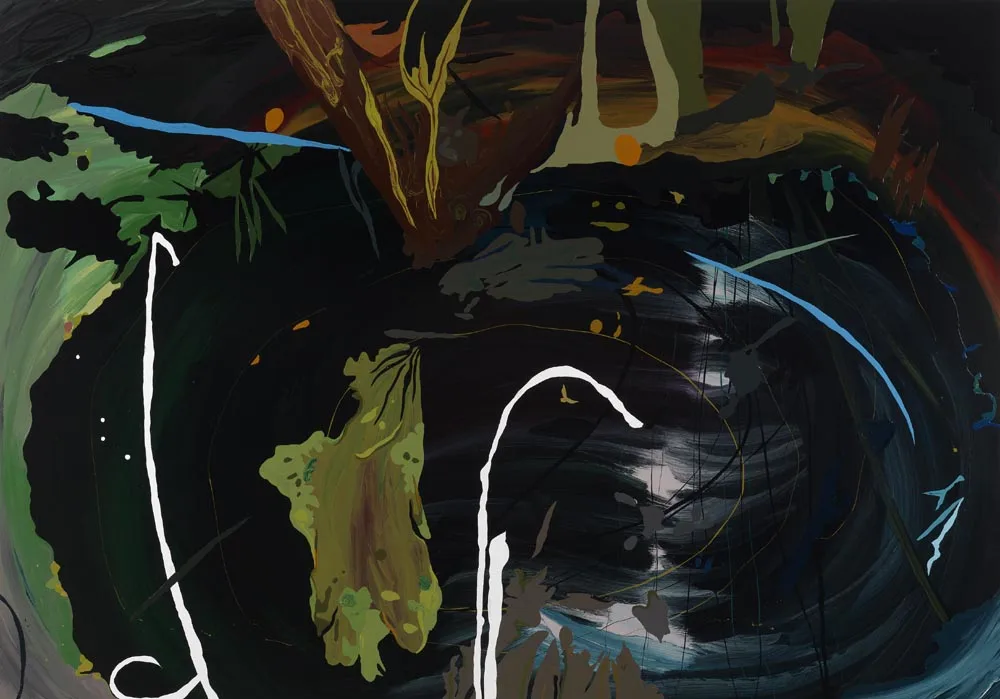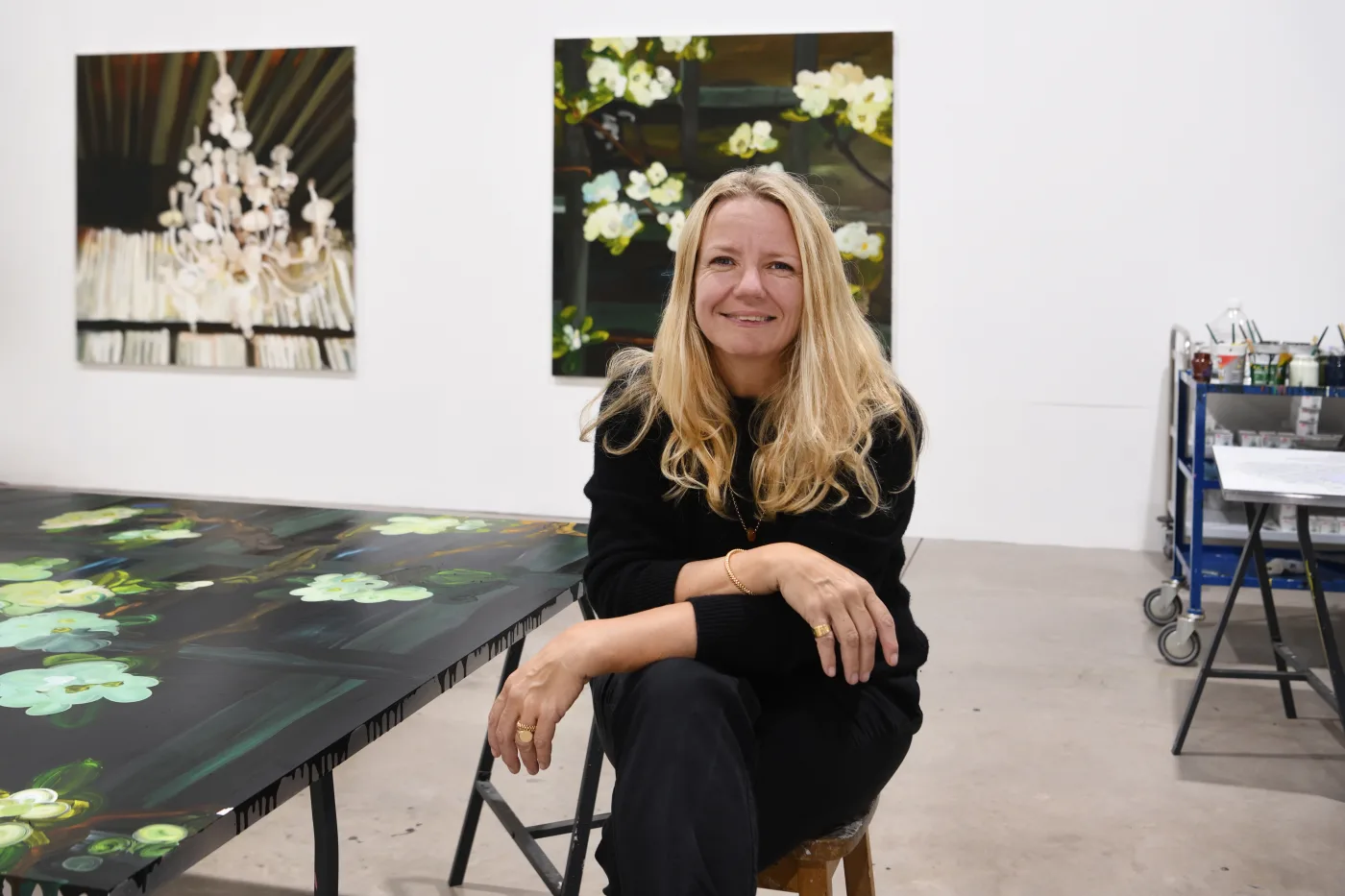Overview
Stephen Friedman Gallery is pleased to bring together new paintings by British artists Caroline Walker and Clare Woods for Frieze London
Stephen Friedman Gallery is pleased to bring together new paintings by British artists Caroline Walker and Clare Woods for Frieze London
In Conversation
Painters Caroline Walker and Clare Woods share a compulsive habit: intently documenting their surroundings, they collect photographic images, a process of scrutiny, aggregation, indexing and filtering that feeds into their respective painting practices, sometimes years after the original images were taken. They each distil scenes and motifs from thousands of shots, reinterpreting them in scores of sketches, a fraction of which eventually results in the actual paintings. In their work they turn a perceptive gaze to contemporary society and interrogate established hierarchies to elevate the often-dismissed still life and genre scenes: on a grand scale, they consider the mundane, the fleeting, the overlooked.
Melanie Vandenbrouck (Chief Curator, Pallant House Gallery, UK)
Caroline Walker
Studio Film
Caroline Walker’s 2024 Frieze London presentation is part of a body of work around nurseries, focusing on the setting her daughter, Daphne, attended until the family moved from London to Scotland two summers ago. The series is set in June 2022, Walker had just completed Lisa, a series following her sister-in-law in the final months of pregnancy and first weeks of motherhood. With Daphne two-and-a-half years old by then, much of Walker’s thinking had been focused on the early stages of bringing up a child and the people involved in their care, predominantly women.
Melanie Vandenbrouck
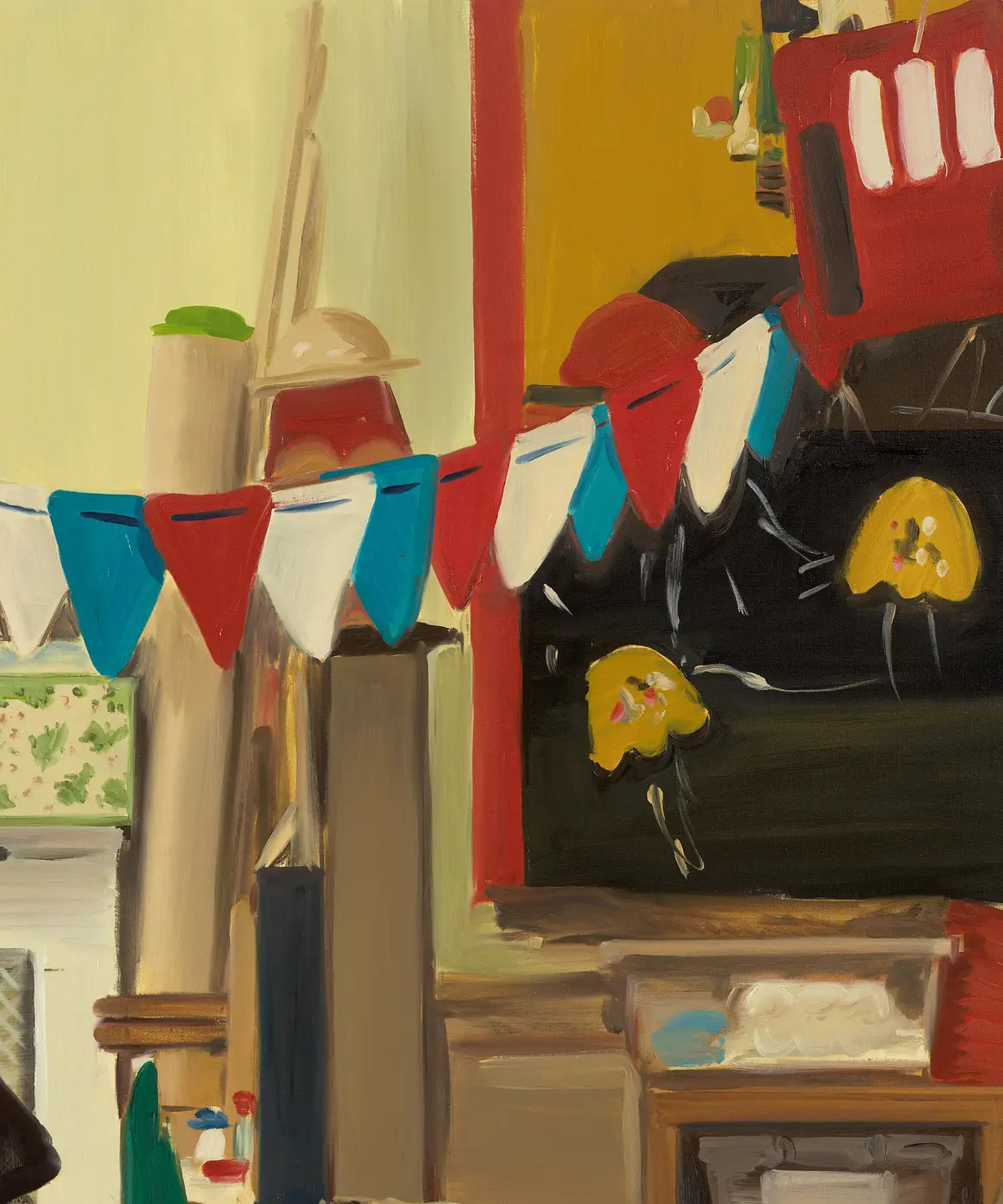
The key protagonists in the series are the working women, their uniform – a cerulean blue T-shirt – the unifying element from one painting to the next. If children are part of the scene, what captivates Walker is the interactions with and interior lives of these women as they play out in the paintings.
Melanie Vandenbrouck
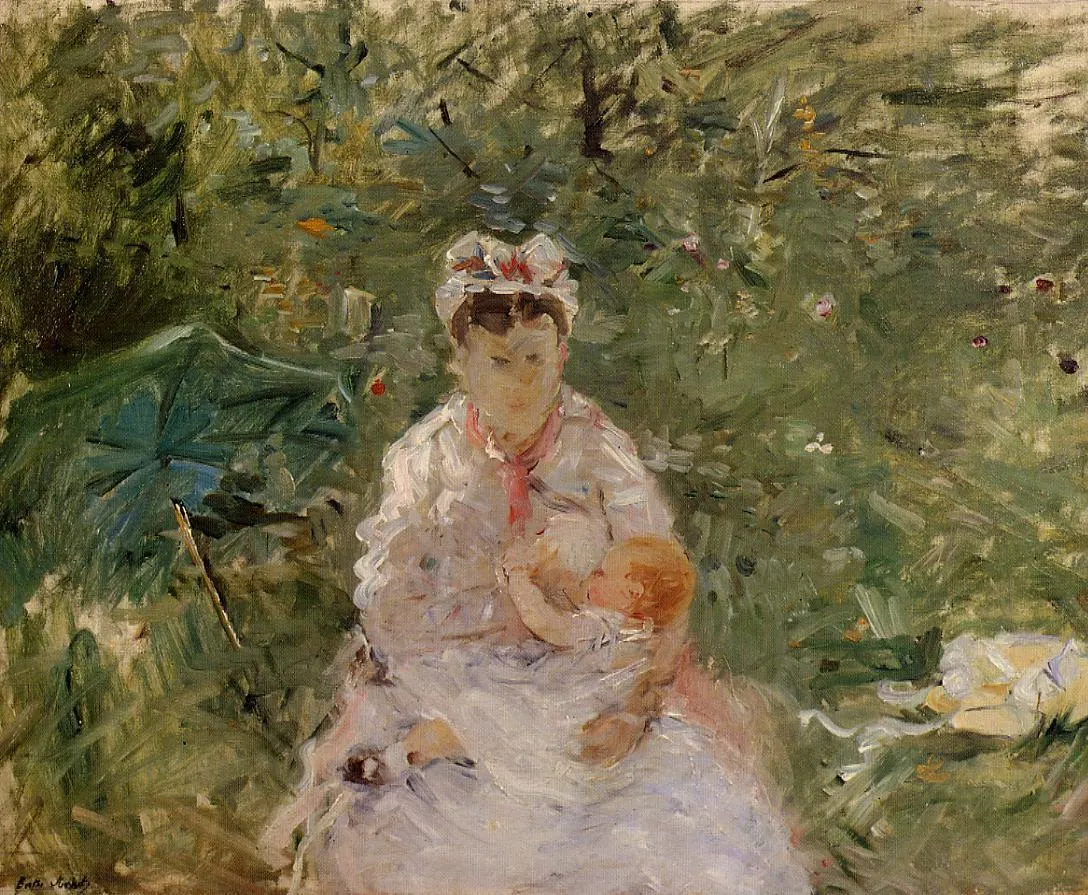
Clare Woods
Studio Film
‘It’s complicated’, says Clare Woods as we talk about her latest body of work, still lifes that sit on the cusp of landscape scenes. The conversation moves from weeds to the history of slavery, from gardening to struggle, family to death, pleasure and suffering. As the conversation unravels, these issues are both related and contradictory, implied and explicit, contained in the work and not. Make no mistake, Woods’ still lifes are not innocuous ‘flower arrangements’, as the genre has often been dismissed as; on the contrary, they contain and project the full gamut of human emotions. Intensely personal, they are at once conceptual and physical, figurative and abstract. They may be still lifes but they feel distinctly ‘of the body’.
Melanie Vandenbrouck

Woods turns out to be surprisingly knowledgeable about weeds – a subject that in turn made her think about desirability, or the lack thereof, of displacement, of things considered to be in the wrong place. While looking at plant history may reveal that there are not so many native plants in British gardens, the subject of ‘invasive species’ has become pervasive in gardening discussions in recent years, not unlike the language used by some groups speaking about human migration.
Melanie Vandenbrouck

Woods’ fascination for history, and the layers of meaning that words acquire also comes in with The Diggers, a term used to refer to people who opposed the Enclosure Act (and called for the abolition of property and aristocracy) in the seventeenth century, but also for the tool used to extract dandelions from the soil. (Like knotweed and bindweed, pulling on dandelion will only result in its root breaking, ensuring regrowth). Inspired by Albrecht Dürer’s Great Piece of Turf (1503, Albertina, Vienna), the viewpoint here is from the ground up, elevating the weeds, the fuzzy dandelion clocks becoming like vaporous clouds. She also cites Eliot Hodgkin’s paintings of weeds pushing through the rubble of London’s bombed sites as inspiration. There’s a resilience and persistence to weeds that feels like life itself – ‘some weed seeds’, Woods marvels, ‘can lay dormant for 400 years.’
Melanie Vandenbrouck
While neither artist’s work could exist without an element of voyeurism, and making us into voyeurs alongside them, Walker’s and Woods’ observations of the everyday are both compassionate and profound. In seeking to bring to the fore the invisible and the ignored, their work not only carries an autobiographical element but touches on the universality of the human condition: of growing and declining bodies, of lives lived and remembered and the ways in which a space – be it in or containing a picture plane – may hold several viewpoints and alternate realities. Despite their scale, their work is intimate and draws you in, revealing that genre scenes and still lifes can carry depth, richness and sometimes darkness that goes well beyond their subject matter.
Melanie Vandenbrouck






